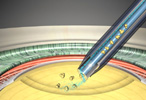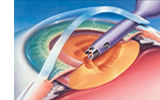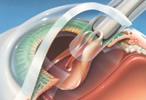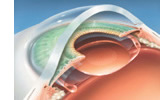
Cataract Surgery
WHAT IS A CATARACT
A cataract is a clouding of the lens in the eye that may reduce your vision. The structure of the lens also changes as the cataract develops.
There are different types of cataract but the two main types are (1) age- related cataract (the most common) and (2) congenital cataracts (present at birth) which are uncommon but important to diagnose early as if undiagnosed the eye may not learn to see which can result in blindness even if the cataracts are removed later in life.
It is not known why age-related cataracts develop but there are certain factors which increase your chances of developing them:
- Diabetes
- Heavy drinking
- Smoking
- Medication use- such as long term use of steroids
- Exposure to ultraviolet light from sunlight (use of sunglasses which block out UVA and UVB rays may help prevent this)
- Family history of cataracts
Symptoms include:
- Worsening of vision-which may appear cloudy, fuzzy or filmy
- Spots in your vision
- Double vision
- Glares and haloes from light
- Difficulty driving at night
- Difficulty in differentiating between colours especially shades of blue
- Frequent changes in prescription as eyesight worsens
- Second sight-your close up vision may improve temporarily as the lens changes shape
For many people, use of glasses and/or contact lenses are sufficient to improve vision but cataracts are likely to worsen over time and so at some point it may be appropriate to consider surgery. Essentially, this means surgically removing the cataract (s) and replacing the damaged lens with an artificial one. The most common technique being phacoemulsification (small incision surgery).


A high frequency ultrasound probe is inserted into the eye through a tiny incision. The probe "mines" out the cataractous lens.


A clear plastic artificial lens is folded up and inserted into the eye through the same tiny incision, in a similar way to putting a ship into a bottle! The lens unfolds within the eye to lie in the same position as the old catarctous lens.


